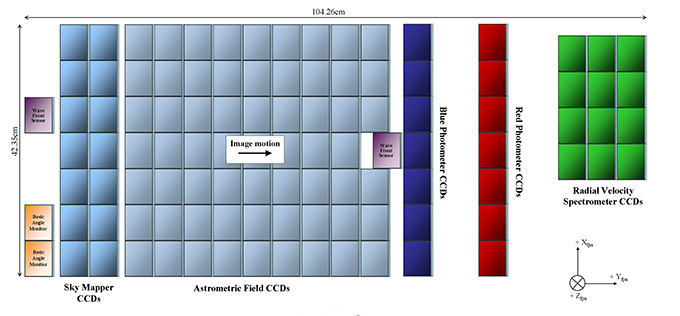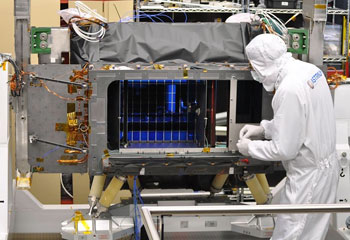
Gaia focal plane. The Gaia focal plane features 7 CCD rows, 17 CCD strips, and 106 large-format CCDs, each with 4500 time-delayed integration (TDI lines), 1966 pixel columns, and pixels of size 10 μm along scan by 30 μm across scan (59 mas by 177 mas). Star images cross the focal plane in the direction indicated by the arrow. View larger image (325 KB). (Image courtesy of ESA - A. D. Short.)

Focal Plane Assembly fully integrated. (Image courtesy of Astrium 2012.)
Much like a traditional meridian telescope, Hipparcos and Gaia measure transit times rather than positions. These transit times are obtained from stellar images passing through the focal plane. For Gaia the focal plane consists of an array of charge-coupled devices (CCDs) which operate in time-delayed integration mode (see how CCDs work). That means that the image of a star is followed as it travels across the CCD, gradually building up the charge. At the readout the image data and associated timing are collected for further processing. The processing defines the time associated with the image centre and the image flux. Through a process called "System Identification" (also referred to as attitude reconstruction) the orientation of the satellite as a function of time is recovered, and used to translate the timed transits into one-dimensional positions.
Further information about Gaia focal plane can be found in the Information Sheet: The Gaia Focal Plane (pdf format).
Next: The scan
Page last updated: 23 December 2013
